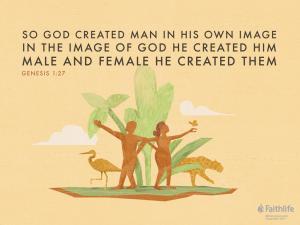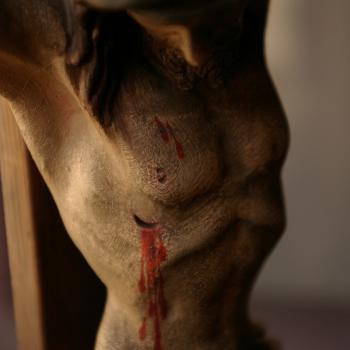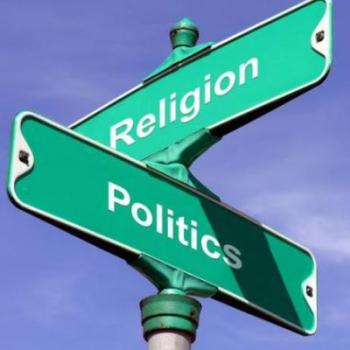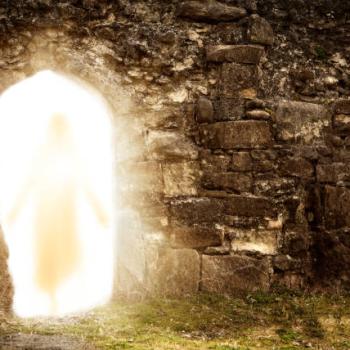 My inner feminist woke up almost from the moment that I became aware of issues relating to women’s welfare or, more bluntly but accurately, the oppression of women. So “Sex and Symbol,” the title of an article in Church Life Journal, one of my favorite online magazines, intrigued but ultimately disappointed me. The author, Abigail Favale, is Director of the William Penn Honors Program at George Fox University.
My inner feminist woke up almost from the moment that I became aware of issues relating to women’s welfare or, more bluntly but accurately, the oppression of women. So “Sex and Symbol,” the title of an article in Church Life Journal, one of my favorite online magazines, intrigued but ultimately disappointed me. The author, Abigail Favale, is Director of the William Penn Honors Program at George Fox University.
I don’t treat women the same as men, and I never went along with the post-modern notion that “everything is a construct,” including our sexuality. Some things are not in our control to determine what they mean. Bodies are simply given. They are signs that can be and are interpreted badly, but that doesn’t mean there are no right interpretations. Favale and I agree on this, but her interpretation differs from mine.
Favale first chronicles her journey to an appreciation of the Catholic imagination. She starts with a rebellious youth in what she describes as a repressive, patriarchal (my words) Evangelical setting and moves on to a liberated and “refreshingly heretical” feminist in college. There “a different notion of woman’s essence is presupposed: namely, none.” Perceptively she sees the same logic in that setting as in the former—a concern with doing over being in both. In the Evangelical church context who a woman is “was inferred from what she should—or should not—do.” In the college setting “women and men become essentially interchangeable, essentially the same. Because a woman can do anything, she no longer is anything in particular.”
I want to stress that I agree with Favale so far. I also appreciate her next move to think about sex “not in terms of role, but symbol.” I agree that the Catholic genius lies in just this area. And I sense a profound truth in this first symbolic difference between the sexes that she notes:
The man has the capacity to transmit life outside of himself, while the woman has the potential to gestate new life within.
Then she says, in the following quote – but please note where my italics end:
If we take these biological realities as a mirror for God and humankind, the male sex is analogous to God because God endows life from himself but stands apart from it; he transcends. And the female sex is representative of humankind because its power lies in receptivity; the human being is created to receive the love of God, be inwardly transformed, and let that love bear fruit.
I would ask: Why not pause with a comma after the word “God”? Then the rest of the paragraph would go in a different direction because both sexes would mirror God to humanity. In fact, that is what the first book of the Bible says:
God created mankind in his image; in the image of God he created them; male and female* he created them. (Genesis 1:27)
Then too both sexes would represent humanity to God and to the world.
God symbolism is complicated
I do not think Favale succeeds in getting either the Catholic or the biblical symbolism right. I think it’s more complicated than one sex for each side of the God-human relationship. God does “transmit life outside of” God’s self. But God also is the womb, surrounding all creation with love and compassion. And that is simply to take seriously the “image” passage in Genesis and the Bible’s other feminine metaphors for God.
Humans also find more profound meaning when represented by both sexes, that is, when woman as symbol also represents man and man as symbol also represents woman. This does not take away woman’s or man’s “essence” and replace it with nothing. It does say that men and women share in both masculine and feminine qualities in a wide variety of ways. It recognizes that in Genesis, Chapter 1 God grants “dominion” (a good word in need of proper interpretation) to humankind in both sexes. And Chapter 3 shows that the relationship between men and women that we live and suffer through is the result of sin, not God’s will.
Favale quotes a 1934 book by German author Gertrud von le Fort:
“[S]urrender to God is the only absolute power that the creature possesses.”
That’s my favorite line in this article, but applying it to men and women is a problem. Surrender is a quality that partners in a loving marriage possess in equal proportions. Receptivity is “embodied in the form of woman” but it’s not the only form that woman embodies. Half of the contribution that begins new life comes from woman.
Our limited understanding
Favale’s use of symbolism takes the apparent (and very common) form of using qualities by which men and women relate to each other (which seemingly we know how to do) and applying them to the relationship between God and humanity. I’m saying it’s really hard to know what the relationship between men and women should be. (Even Genesis doesn’t tell us, though it does tell us how that relationship is distorted by sin.) Who, for example, is the initiator in the love-making between husband and wife? It could be one or the other, but I suspect in most cases it’s impossible to tell.
Here is a guess: Maybe the symbolism is going in the opposite direction from what appears. Is Favale modeling the God-human relationship after man and woman or the other way around? We have inherited beliefs about our relationship to God. These beliefs have emphasized God’s activity and our passivity, God’s initiative and our response, God’s power and our weakness. Above all they have emphasized God’s transcendence. Maybe it’s this God-human relationship that has turned out to be the mirror in which Favale and many others see the relationship between the sexes.
A final thought: Maybe that’s a distorted mirror. After all, God has granted creation its own activity and initiative. In the New Testament God takes on the receptive, passive role of the lamb slain and conquers through weakness, not power. A picture of God’s weakness is present in the Old Testament as well. A true image of God tries to balance transcendence with immanence and recognizes that in the end we don’t understand very much.
So I can end with Favale’s closing words and a few added ones of mine:
The sacramental, analogical imagination of Catholicism shifts the worthiness of woman [and man] from doing to being. … Bodily sex is not made purposeful through mandated tasks or restrictive temporal roles; the supreme meaning of our sexed nature is to be living, visible icons [both female and male] that gesture continually [and in ways we still are figuring out] toward the world beyond the veil.












